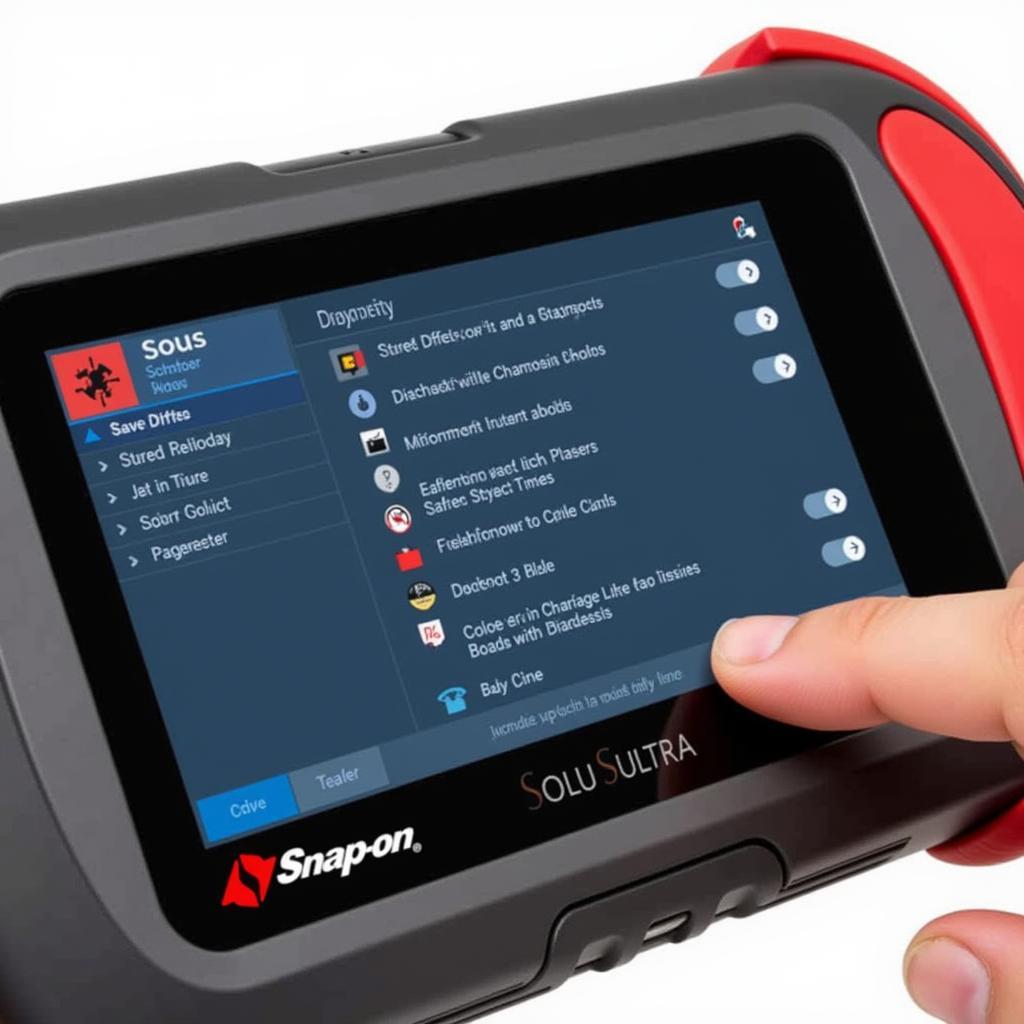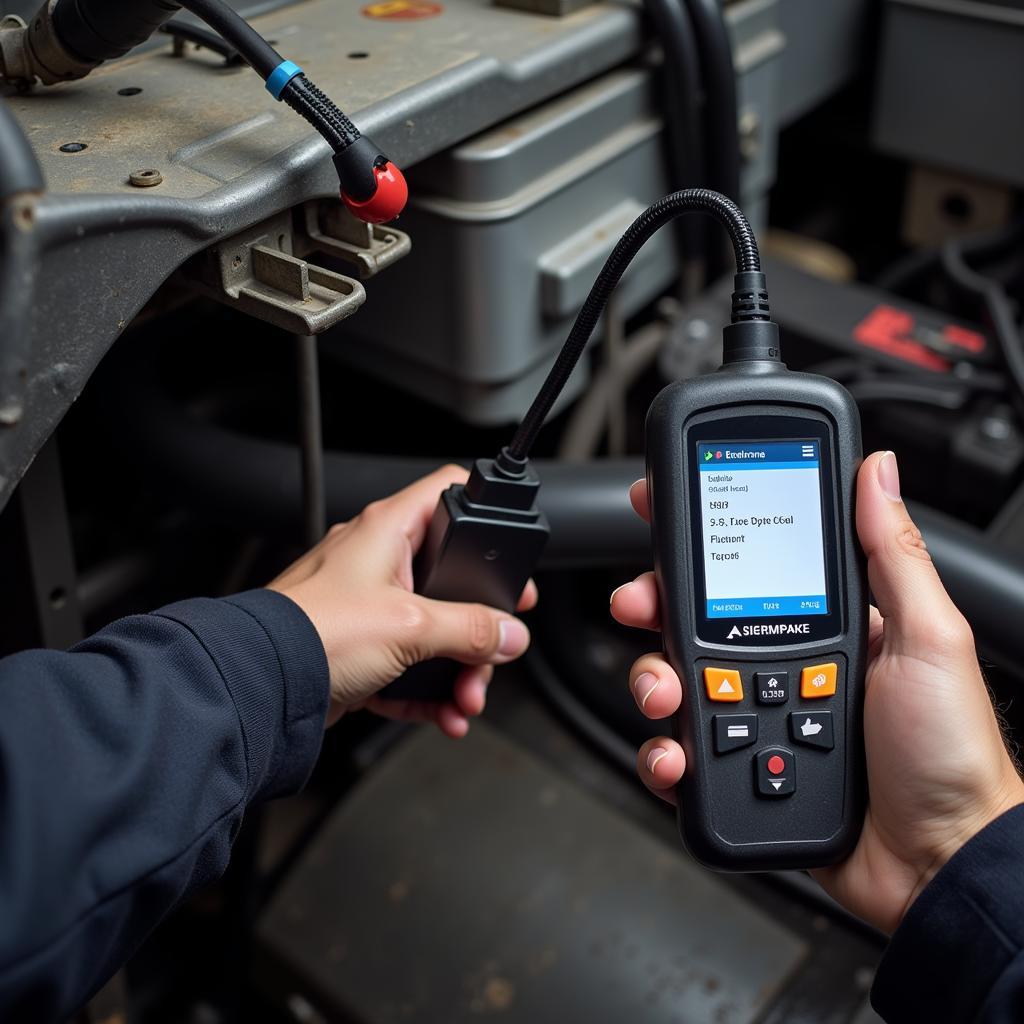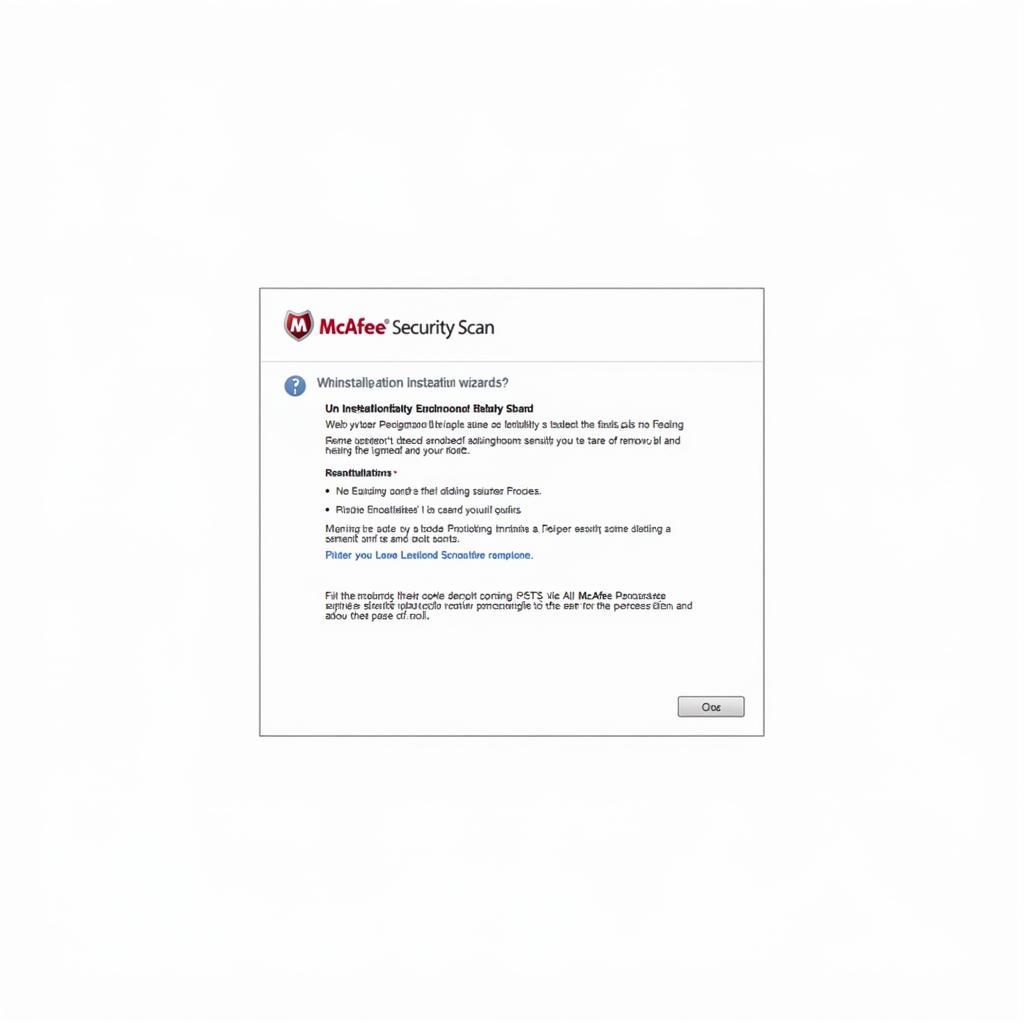An OBD scan tool is crucial for checking smog readiness. It helps identify potential issues before your emissions test, saving you time and money. This comprehensive guide will delve into the importance of OBD scan tools for smog checks, how they work, and how to use them effectively.
Understanding Smog Readiness and OBD Scan Tools
Smog readiness refers to your vehicle’s emissions system’s ability to perform self-tests and report its operational status. These tests ensure your car meets the required environmental standards. An OBD (On-Board Diagnostics) scan tool is a device that connects to your car’s OBD-II port, usually located under the dashboard, to retrieve diagnostic information. This information includes diagnostic trouble codes (DTCs), freeze frame data, and importantly, smog readiness status.
Using an OBD scan tool for smog readiness allows you to proactively address any potential problems before heading to the testing center. Imagine the frustration of failing an emissions test due to a minor issue that could have been easily resolved beforehand! An OBD scan tool empowers you to take control of your vehicle’s emissions health.
How Does an OBD Scan Tool Check Smog Readiness?
The OBD-II system continuously monitors various components of your vehicle’s emissions system, such as the catalytic converter, oxygen sensors, and evaporative emissions system. When you use an OBD scan tool to check smog readiness, it communicates with the vehicle’s computer (ECU) and retrieves the status of these monitors. Each monitor will show as either “complete” or “incomplete.” For your vehicle to be considered smog ready, all relevant monitors must be “complete.”
Incomplete monitors can indicate a problem with the corresponding component or simply that the vehicle hasn’t been driven under specific conditions required to complete the test. For example, some monitors require a mix of highway and city driving cycles to complete.
Using an OBD Scan Tool for Smog Readiness: A Step-by-Step Guide
- Locate the OBD-II port: Typically found under the dashboard on the driver’s side.
- Connect the OBD scan tool: Plug the scan tool into the OBD-II port.
- Turn the ignition on: Don’t start the engine, just turn the key to the “on” position.
- Select the “Smog Readiness” or “I/M Readiness” option: The exact wording may vary depending on the scan tool model.
- Review the results: The scan tool will display the status of each emissions monitor.
“Why is my OBD scan tool showing incomplete monitors?” This is a common question. It can be due to recent repairs, a disconnected battery, or simply not driving the vehicle enough under varying conditions.
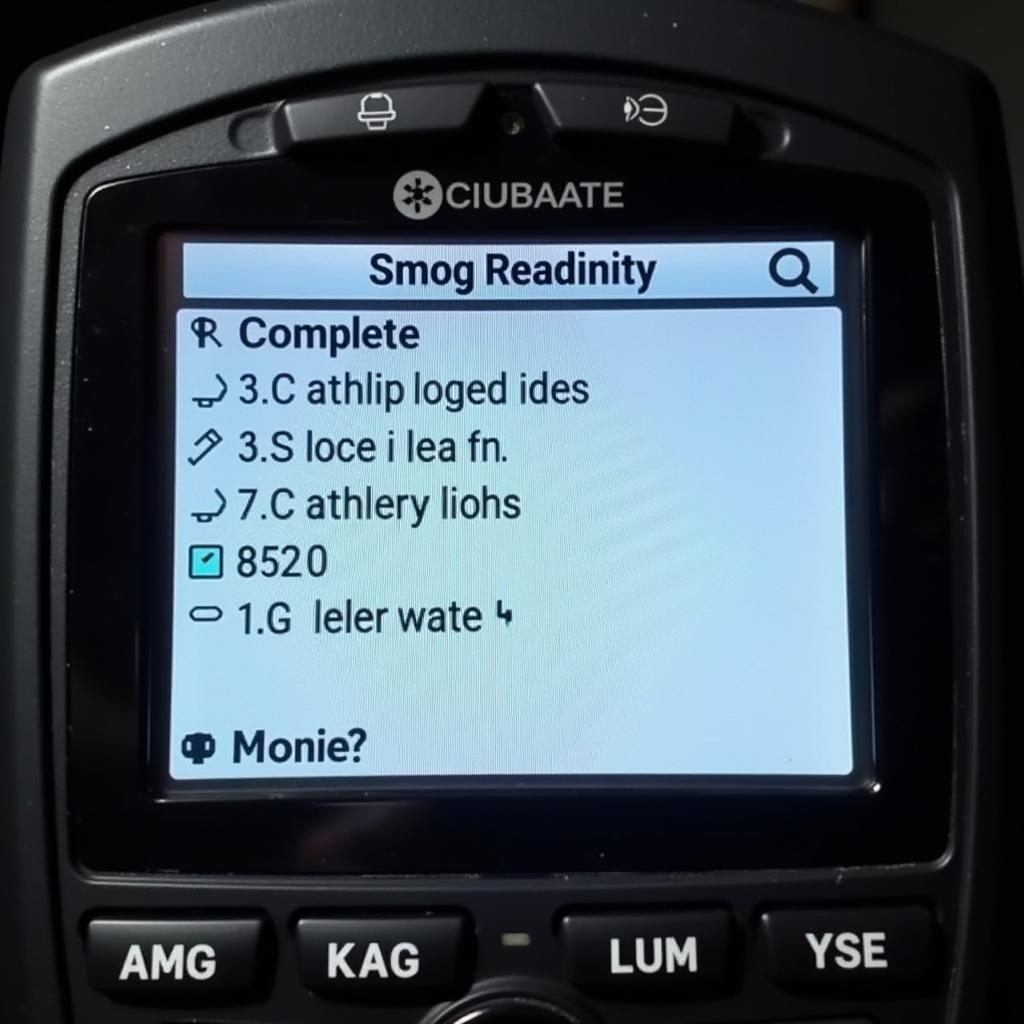 OBD Scan Tool Displaying Smog Readiness Status.
OBD Scan Tool Displaying Smog Readiness Status.
Choosing the Right OBD Scan Tool for Smog Checks
There are a plethora of OBD scan tools available on the market, ranging from basic code readers to advanced professional-grade devices. For checking smog readiness, a basic code reader with I/M readiness capabilities is usually sufficient. However, if you’re a professional technician, investing in a more advanced scan tool with bidirectional communication and live data streaming can be beneficial.
Consider factors like ease of use, features, compatibility with your vehicle’s make and model, and budget when choosing an OBD scan tool.
“A reliable OBD scan tool is an essential part of any DIYer’s or professional technician’s toolkit. It’s like having a personal mechanic at your fingertips,” says Robert Johnson, Senior Automotive Engineer at ScanToolUS.
OBD Scan Tool Smog Readiness: Beyond the Basics
While checking smog readiness is a primary function, OBD scan tools offer much more. They can help diagnose a wide range of vehicle problems, from engine misfires to transmission issues. Having access to this information can save you significant money on repairs by allowing you to identify the root cause of the problem yourself.
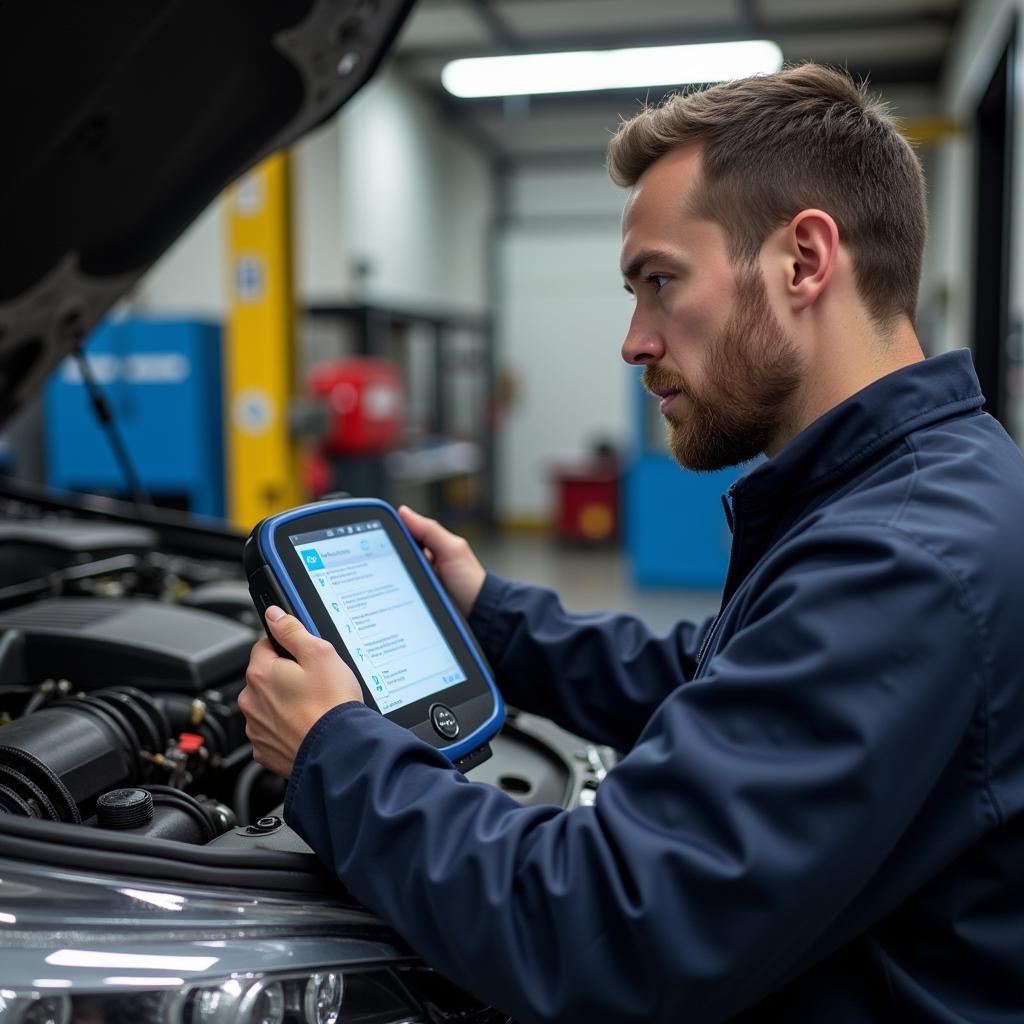 Mechanic Using OBD Scan Tool in Workshop
Mechanic Using OBD Scan Tool in Workshop
Conclusion
OBD scan tool smog readiness is crucial for ensuring your vehicle passes emissions tests. By using an OBD scan tool, you can identify potential problems early on, saving yourself time and money. Understanding how to use these tools and choosing the right one for your needs will empower you to maintain your vehicle’s emissions system and contribute to a cleaner environment. Need assistance? Contact ScanToolUS at +1 (641) 206-8880 or visit our office at 1615 S Laramie Ave, Cicero, IL 60804, USA.
“Investing in a quality OBD scan tool is a smart move for any car owner. It’s a small price to pay for the peace of mind it provides,” adds Maria Sanchez, Lead Technician at ScanToolUS.
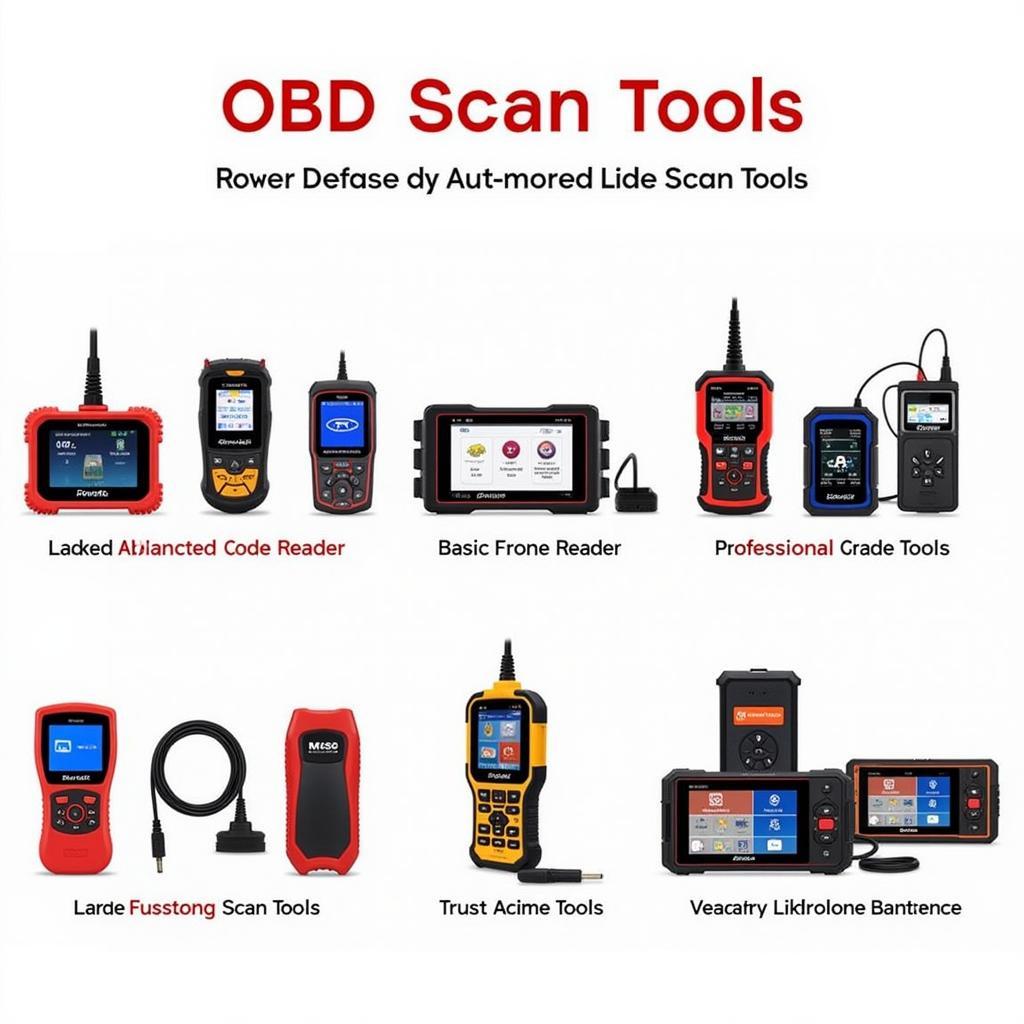 Different Types of OBD Scan Tools
Different Types of OBD Scan Tools
FAQ
- What does it mean if my car is not smog ready? It means one or more of the emissions monitors haven’t completed their self-tests.
- How can I make my car smog ready? Driving the vehicle under varying conditions (city and highway driving) can help complete the monitors.
- Can I use any OBD scan tool for smog readiness? Most OBD-II compliant scan tools will have a smog readiness check function.
- How much does an OBD scan tool cost? Prices vary depending on features, ranging from affordable basic models to more expensive professional-grade tools.
- What is an I/M Readiness monitor? It refers to Inspection and Maintenance readiness, essentially the same as smog readiness.
- Do I need a special OBD scan tool for my specific car make and model? While most scan tools work universally, some advanced features might be model-specific.
- What should I do if all monitors are complete but I still fail the smog test? There might be an underlying issue that the OBD scan tool couldn’t detect. Consult a qualified mechanic for further diagnosis.

